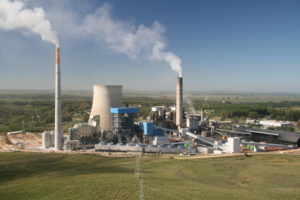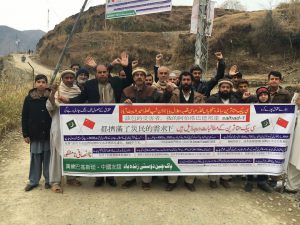The relationship between Latin America and the Caribbean (LAC) and China is growing increasingly complex and requires close academic attention.
This relationship has passed through at least three different phases since the1990s. In the first phase (which began in the 1990s), trade between LAC and China has increased significantly; if historically the trade relationship was quantitatively of little relevance, now LAC is China’s fourth largest trading partner, and China is LAC’s second largest.
Since 2007/2008, the China-Latin America relationship entered a second phase based on financing and Overseas Foreign Direct Investment (OFDI). Authors such as Kevin Gallagher have analysed in detail the characteristics of Chinese funding for LAC, particularly its concentration on a small number of countries such as Venezeula, Ecuador and Brazil. The Academic Network for Latin America and the Caribbean (RED-ALC China), which we coordinate at the Centre for Chinese-Mexican Studies (CECHIMEX) at the National Autonomous University of Mexico (UNAM) has also monitored China’s OFDI in LAC.
But since 2013, China has moved into a new, third phase in its relationship with LAC: infrastructure projects. Based on sophisticated strategies such as the “One Belt, One Road” (OBOR) strategy, which in May held a major international forum – and dozens of new funds for regional and specialised sectorial funding (the most well-known being the Asian Infrastructure and Investment Bank, or AIIB) – China has been able to offer “turn-key” projects, where a firm agrees to fully take on the design, building and equipping of a project.
However, the relationship is riddled with tensions and conflicts: the high and growing trade deficit; the high degree of concentration of trade in only a few products and chapters of the Harmonised System (a standardised system of names and numbers to classify traded products); and in particular, the fact that less than 5% of LAC exports to China are of medium to high technological level, while more than 60% of China’s exports to LAC are of medium and high technological level. Until now, the relationship is typically “centre-periphery” in structure, where one less developed country (or region, in this case LAC) meets the consumption needs of the more developed country (in this case China).
This presents enormous challenges for LAC in attempting to achieve effective development in the short and medium term.
The relationship’s increasing complexity is a central focus of the RED ALC-China, along with various Chinese counterparts such as the Institute for Latin American Studies Institute at the Chinese Academy of Social Sciences (CASS in English), and colleagues and authors from such universities as Tsinghua, Renmin, Fudan, Peking and the University of International Business and Economics (UIBE), among others.
In this context of this increasing complexity, we analyse the issue of overseas foreign direct investment (or OFDI).
According to recent analyses of by the RED-ALC China, and based on information from the Heritage Foundation, until 2016 China had carried out more than 1,100 infrastructure projects totalling more than $600 billion dollars. Just 20 Chinese enterprises, all publicly owned, accounted for more than three quarters of the holdings of China’s infrastructure projects abroad. Thus, these companies have come under ever-increasing focus in LAC’s relationship with China. Companies such as the Chinese Overseas Engineering Group (COVEC), Sinohydro (currently the flagship of the Powerchina Group), China Railway Construction Corporation, Huawei and ZTE (telecommunications), Sinopec (oil), Stat Construction Engineering, China National Machinery Industry Corporation (Sinomach), China National Building Material, China Communications Construction, Three Gorges, Power Construction Corporation of China and State Grid, among others, offer wide-ranging technical expertise and capacity for design, financing, procurement, construction, manufacturing and after-sales services.
From a LAC perspective, however, these options present enormous development challenges, since the capacity for domestic, regional or national integration, in the sectors these companies operate in is scarcely zero.
Our recently revised data from the Monitor of China’s OFDI in LAC up to 2016 shows the following:
- 313 Chinese OFDI transactions carried out in LAC during 2000-2016, which amounted to almost US$120 billion and the creation of 300,000 jobs to date;
- Flows of OFDI exceeded $35.5 billion in 2010, by far the year in which LAC received the largest Chinese amount. In 2015 and 2016 the totals were $9.383 billion and $11.273 billion, respectively;
- With 238 new projects, Chinese OFDI stands out for its relatively low levels of mergers and acquisitions (24% of the total) during 2000-2016; finance and accounting (F&A) accounted for 39.72% of employment generated by Chinese OFDI for the period;
- Chinese public OFDI is still omnipresent. It represents 63.25% of total OFDI and generates 75.03% of total Chinese OFDI-generated employment in LAC..
- In recent years, the destination of OFDI has been decentralised: for 2000-2016, 45.29% was allocated to raw materials and energy, while 30.07% to various manufacturing processes.
Analysis by the RED ALC-China based on the experiences of 10 Chinese companies in LAC shows that they require 3 to 5 years to integrate and learn about the respective Latin American countries, sometimes more. This is an invitation to public, private and academic sectors to join forces in attracting Chinese OFDI and helping to reduce costs, times, and in many cases, the political and social conflicts that result from poorly researched investments.
These initiatives should be pursued not only bilaterally, but also in regional institutions such as the Community of Latin American and Caribbean States (CELAC).
Reducing these times, costs, social and political conflicts would be beneficial to all parties.





